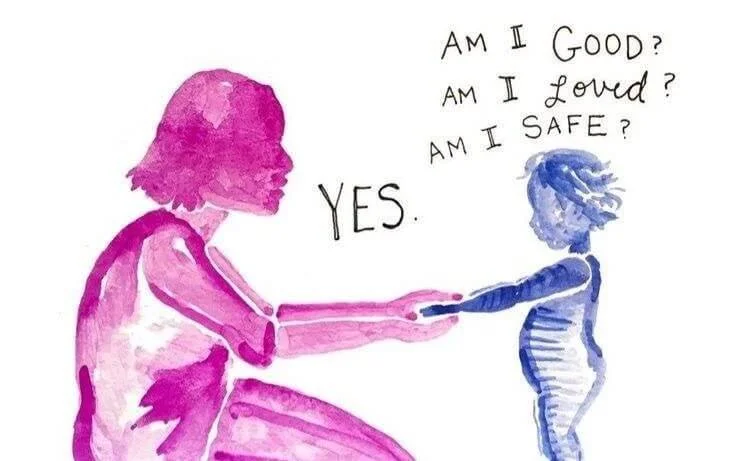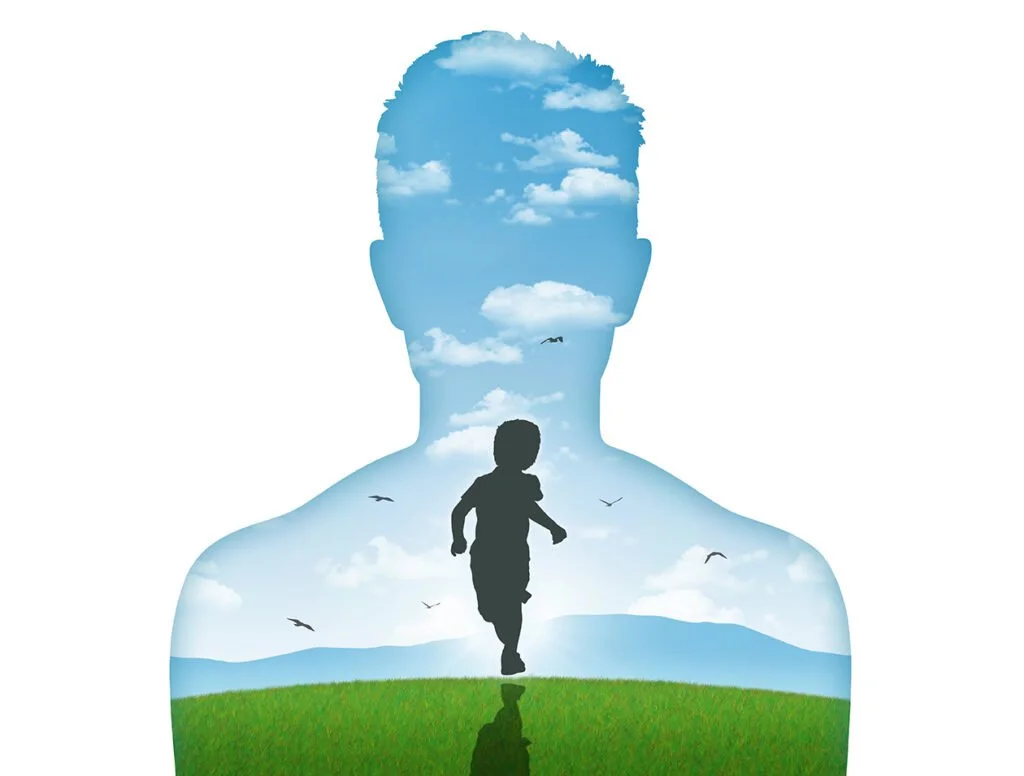Meeting the Inner Child: Understanding a Core Part of Ourselves
We all carry versions of ourselves from the past. That excited child who danced in the kitchen, the anxious teen who struggled to belong, or the shy young one who was told to be “seen and not heard.” These younger parts of us don’t vanish as we grow up—they live on inside, often shaping how we respond to the world today. This is the essence of the “inner child” concept: the idea that we all carry emotional imprints from childhood that continue to influence our adult lives.
Understanding and connecting with the inner child can be a deeply healing journey. For many, it provides clarity around emotional patterns, relationship struggles, and recurring anxieties. Through therapy, this journey becomes a compassionate invitation to acknowledge, comfort, and ultimately integrate the parts of ourselves that have long been neglected.
What Is the Inner Child?
The term “inner child” refers to the part of our psyche that holds onto the emotional experiences of our childhood—both joyful and painful. It’s not a literal child within us, but rather a symbolic representation of our early emotional life. Psychologist John Bradshaw, who popularised the term in the 1990s, described the inner child as “the carrier of our childhood needs, feelings, and memories” (Bradshaw, 1990).
The inner child holds not only trauma but also playfulness, creativity, spontaneity, and wonder. However, if our emotional needs weren’t met consistently or we experienced neglect, criticism, or abuse, our inner child may be wounded. These wounds can show up in adulthood as difficulty trusting others, low self-worth, perfectionism, or even people-pleasing tendencies.
How the Inner Child Shows Up Day-to-Day
We may not realise it, but many of our adult behaviours are shaped by unresolved childhood experiences. Here are a few ways the inner child might appear in everyday life:
1. Emotional Triggers
Have you ever reacted to something seemingly small—a partner’s tone of voice, being ignored in a meeting, or feeling excluded from a group—with intense emotion? That reaction may be the inner child speaking. These emotional flashbacks often bypass our rational brain and activate old feelings of rejection, fear, or shame (Walker, 2013).
2. People-Pleasing and Boundary Issues
Many adults struggle to say “no” or express their needs because their inner child learned that love and acceptance were conditional. If you had to be the “good” child to avoid punishment or win affection, you may still operate from that framework, even at the cost of your own wellbeing (Schwartz, 2021).
3. Self-Sabotage and Inner Criticism
The inner child is often deeply sensitive to criticism. If you internalised harsh messages from caregivers, you might have developed a strong inner critic that tells you you’re not good enough, smart enough, or lovable. This can lead to perfectionism or giving up on goals before you start.
4. Struggles with Intimacy
Our first attachments—usually to our parents or primary caregivers—shape how safe we feel in close relationships. A wounded inner child might fear abandonment or mistrust love, leading to patterns of pushing people away or clinging too tightly (Bowlby, 1988).
5. Lack of Joy or Creativity
If you were discouraged from being playful or expressive as a child, your inner child might feel unsafe being vulnerable in adulthood. You may find it hard to relax, try new things, or let your guard down. Reconnecting with this part of yourself can unlock a renewed sense of joy and authenticity.
Where the Wounding Comes From
Inner child wounding doesn’t always stem from dramatic trauma. It can arise from:
Emotional neglect – not being comforted when upset, or not being seen for who you truly were.
Overcontrol or enmeshment – not being allowed to develop independence or express dissent.
Shaming experiences – being told your emotions were “too much” or being made to feel defective.
Unpredictable caregivers – walking on eggshells around a parent who was volatile or emotionally unavailable.
Even well-intentioned parents can unintentionally cause harm, especially if they were never taught how to regulate their own emotions or meet a child’s emotional needs.
Many of our adult behaviours are shaped by unresolved childhood experiences
Healing the Inner Child Through Therapy
Therapy offers a safe, structured space to meet the inner child with compassion rather than criticism. Here’s how therapy can help:
1. Naming and Validating the Experience
Many people feel shame for how they feel—especially when they “shouldn’t” be upset. Therapy helps clients explore their childhood experiences with curiosity and non-judgment, validating that their emotional responses make sense in light of their past.
This process, often referred to as reparenting, allows adults to give themselves the emotional support they didn’t receive when younger (Bradshaw, 1990).
2. Identifying Core Beliefs
Wounded inner children often hold onto harmful core beliefs such as “I’m not lovable,” “I have to be perfect to be safe,” or “My needs don’t matter.” Therapy helps to uncover and challenge these beliefs, often using cognitive-behavioural or schema therapy approaches (Young et al., 2003).
3. Engaging with the Inner Child
Some therapeutic models—such as Internal Family Systems (IFS) or inner child work—encourage clients to actively dialogue with their younger selves. This might involve visualisations, letter writing, or even drawing. These practices allow people to build trust with the inner child and provide it with the nurturing it lacked.
4. Emotion Regulation and Safety
A key part of healing is learning how to soothe yourself in moments of distress. The therapist helps clients develop emotional regulation tools while also modelling what a secure, consistent, and emotionally present relationship looks like.
5. Integration
Ultimately, healing doesn’t mean “getting rid of” the inner child. It means integrating that part of you into your adult self. You can become the safe parent to your inner child, offering compassion, structure, and unconditional love.
Signs of a Healing Inner Child
As healing unfolds, you may notice:
Greater self-compassion and less self-criticism
More balanced reactions to conflict or stress
Increased comfort with vulnerability
Deeper intimacy and trust in relationships
Reclaimed joy, creativity, and spontaneity
The ability to set healthy boundaries without guilt
Everyday Ways to Connect with Your Inner Child
Here are a few simple practices:
Ask yourself: What would my younger self need right now?
Spend time doing things you loved as a child—drawing, dancing, being in nature.
Talk to yourself kindly—imagine speaking to a child who needs reassurance.
Keep a photo of yourself as a child in a place you’ll see regularly.
Write a letter from your adult self to your inner child.
These actions may feel awkward at first, but over time, they can cultivate a profound sense of inner safety and self-connection.
You can become the safe parent to your inner child
Why Inner Child Work Matters
So many adult struggles—from burnout to relationship conflict to chronic anxiety—have roots in early emotional wounds. Inner child work doesn’t mean dwelling in the past. It means understanding where we come from so, we can reclaim choice, freedom, and joy in the present.
When we tend to the inner child, we soften the hard edges of self-protection. We begin to live from a place of wholeness rather than woundedness. Therapy isn’t about “fixing” you. It’s about helping you reconnect with the parts of yourself that never got the chance to fully thrive.
About Mark Ryan
Mark Ryan is a psychotherapist based in London, specialising in relationship therapy and emotional healing. With a warm and grounded approach, he supports individuals and couples to reconnect with their authentic selves and navigate the complexities of love, trust, and emotional resilience. He is the founder of Rise and Grow Therapy, offering a compassionate space for self-discovery and transformation.
References
Bowlby, J. (1988). A Secure Base: Parent-Child Attachment and Healthy Human Development. Routledge.
Bradshaw, J. (1990). Homecoming: Reclaiming and Championing Your Inner Child. Bantam.
Schwartz, R. C. (2021). No Bad Parts: Healing Trauma and Restoring Wholeness with the Internal Family Systems Model. Sounds True.
Walker, P. (2013). Complex PTSD: From Surviving to Thriving. Azure Coyote.
Young, J. E., Klosko, J. S., & Weishaar, M. E. (2003). Schema Therapy: A Practitioner’s Guide. Guilford Press.


